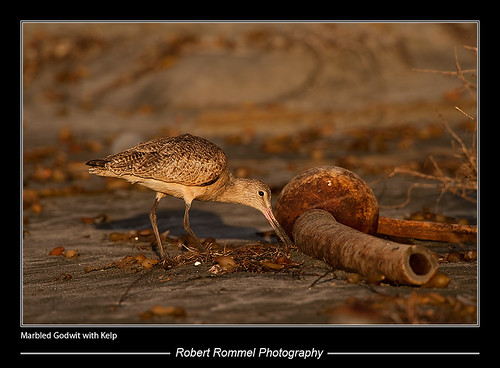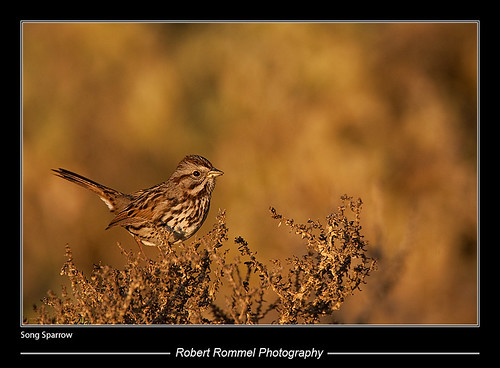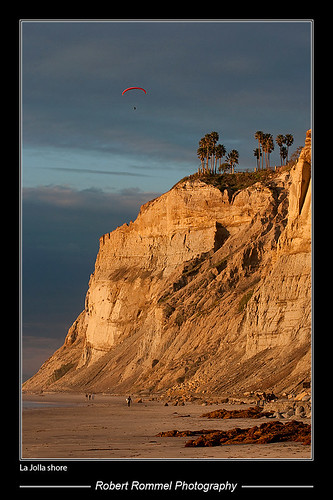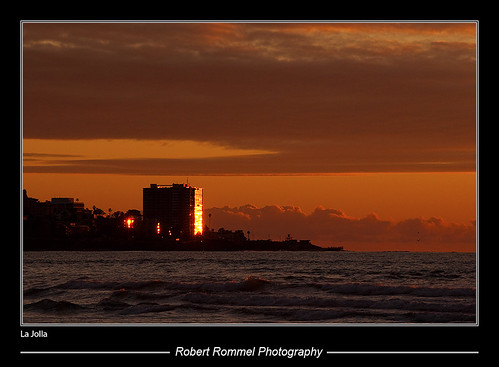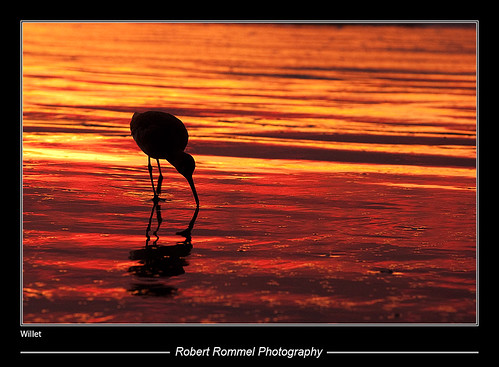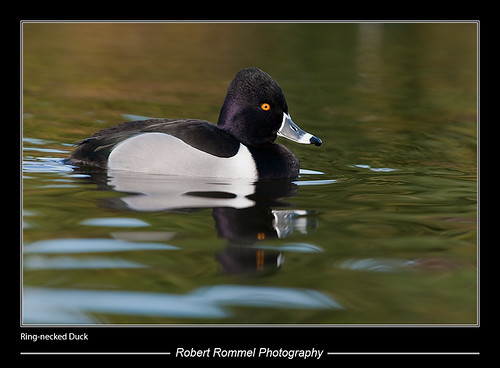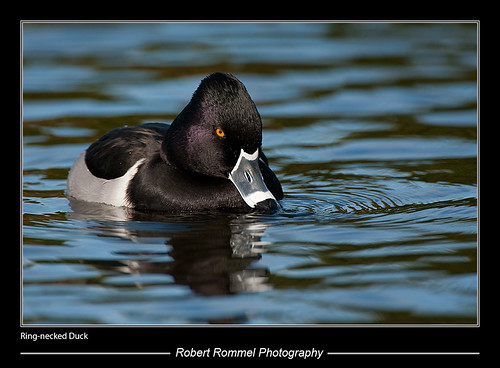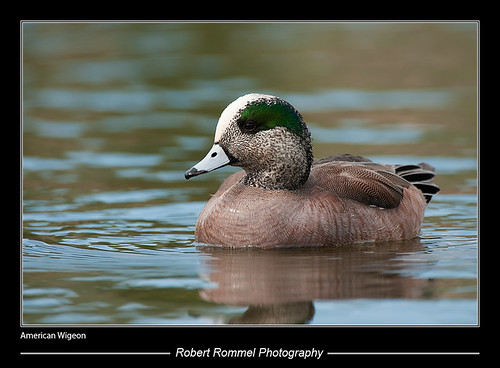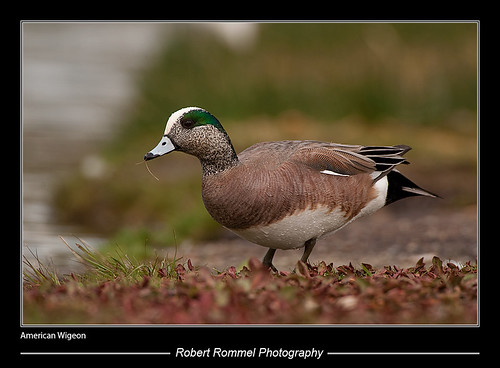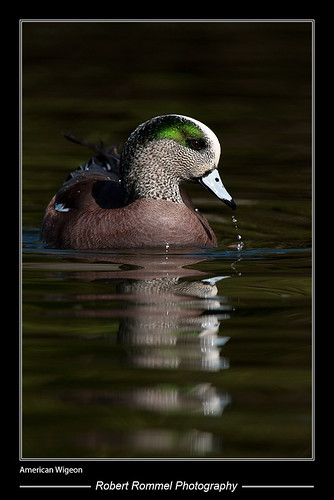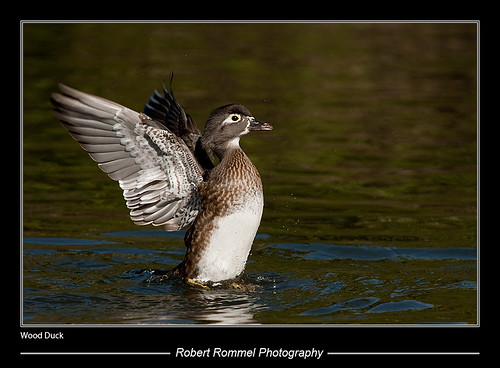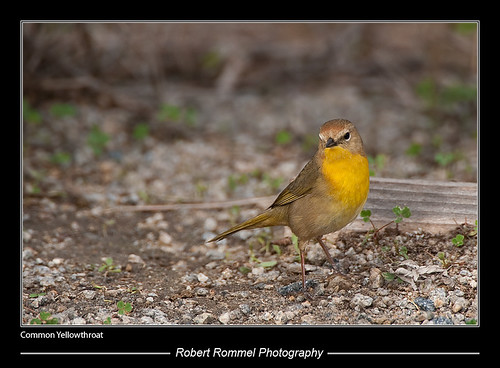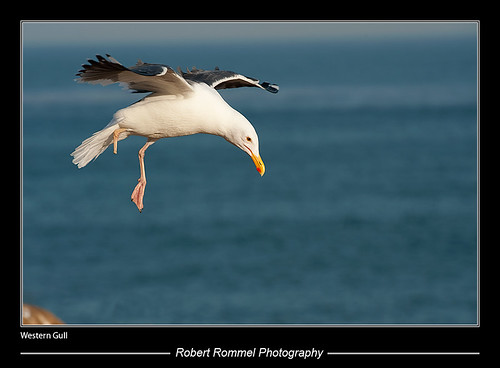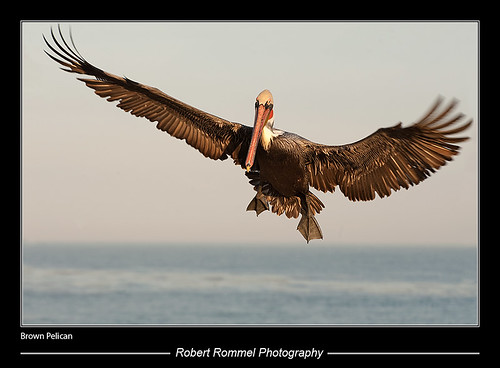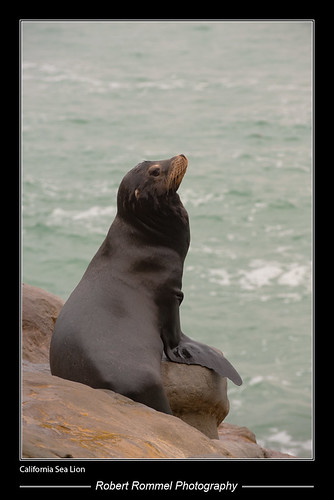(January 27th) After a very long morning with the ducks, it was time to head to the shore. Getting access to the shore where I wanted was much harder than I had thought. I kept going down side streets, but none of them had access to the ocean through the cliffs. Finally I talked with a local resident and was pointed to the one street that I didn't try and walked down through the cliffs. As I walked the length of the beach, it seemed I was out of luck - no birds anywhere. The drought lifted at a rocky outcropping where I found a Spotted Sandpiper.
The beach didn't have much in the way of birds, but there were a couple of Willets hanging around. I was treated to a little bit of behavior unexpectedly and was able to snag a few shots. Although they had the whole beach to themselves, one of the Willets decided to chase the other away. Who knows why it wanted that one spot so much.
As the sun approached the horizon, a third shorebird showed up at the beach. A Marbled Godwit landed a few hundred yards away from me. Most shorebirds make there way down to the shoreline to forage, but this godwit headed up to line of debris. It busied itself sorting through the kelp and finding morsels mixed in. The kelp on the Pacific shore is quite amazing. Huge pieces of seaweed frequently wash up, something you never see on the Atlantic shore.
While photographing the godwit, I heard a call from the brush at the edge of the beach. After a while I was able to locate the source. A Song Sparrow was perched atop some vegetation. This was yet another bird that I've seen many other places, but the plumage in southern California is distinctly different from what I am used to - in this case the markings are much bolder and the rufous patches more prominent.
In wildlife photography the perception is that you are out someplace remote, surrounded by gorgeous scenery. Much of the time this isn't true and part of the challenge is to make the environment look its best. But down at the shore here, it certainly wasn't the case. The surroundings truly were gorgeous and while the animals kept me busy most of the time, occasionally I did stop to marvel at it. To further add to things, there was a place atop the cliffs where paragliders were taking off from and flying overhead in the stiff air currents.
As I glanced across the water, the sunset was lighting up the town of La Jolla. Most of the buildings in La Jolla are relatively small, but there is one large building. Frotunately this building has a glass front adding some drama to the scene.
The sunset was magnificent, but I loved most was following the three shorebirds I had around during the sunset. The shore turned to glass that burned richly. I was very pleased with the way the shots turned out and had many successful images with only these three subjects. One of my favorites was this photo of one of the Willets. I think the photos were worth the embarassment and discomfort of lying down in the wet sand and getting drenched. It was a wonderful end to an amazing afternoon of photography.
Thursday, March 11, 2010
Tuesday, March 9, 2010
The Way the Wind Blows
(January 27th) It's become a bit of a routine now, waking up before dawn and driving up to the cliffs to spend time with the pelicans. When I got there everything was all wrong. The light was fine, and the pelicans were there. The big problem was the wind - it was blowing in the worst possible direction. If I was to use the light when the sun came up, I'd be getting a lot of photographs of the rear of pelicans. Head-on, from the side - these angles all are workable, but from the tail just isn't good. So I quickly got back in the car and drove another half an hour to get the duck location. After waiting around about an hour for the park to open, in I went and the ducks, like this Ring-necked Duck were waiting.
I had a lot of portrait shots from the last time here, so I was trying to work a few new things. I wanted some 'action' shots, and well... you just have to wait and hope. I found it comical when this Mallard rolled onto its side in the water and started to scratch itself.
While action was a goal, my primary motivation for the day was to apply some of the lessons I had learned from working the light at the shore three days earlier. The goal was to bring out some nice color in the water and work the light properly. Started out pretty simple with some more typical colors like in this Ring-necked Duck photograph.
Clouds came through and changed the light pretty dramatically and I moved around to a different lake. The lakes here had several duck species. While I spent a lot of time with the Ring-necked and Wood Ducks, there were a few of the less common ducks like this male American Wigeon that provided some great opportunities.
I was busy photographing the ducks in the water when the completely unexpected happened. One of the wigeons decided to walk right up out of the water, and right next to me. I'm lying completely down to make the birds at ease with me and also to get a good angle on the birds. It gave me some unusual shots of the American Wigeon I would never have guessed I would take before he walked too close to me to photograph.
The sun eventually emerged from the clouds and I moved back to the original concept and moved to a spot where I could work the color into the water. I was very pleased with the hues in a series of photographs of another wigeon. The water dribbling from his beak added an nice extra touch.
As always, there were many shots I missed. Most I just wasn't able to get the camera on in time and the shot by the time I did, and a few something was missing with my capture. Plenty did come out as I was imagining though. In a few that combination of light, color, composition, and subject all came together. I had a lot of action shots during the day, mostly of birds flapping. I've spent so much time showing off the males, that I thought I'd show this one of a female Wood Duck.
I had a lot of portrait shots from the last time here, so I was trying to work a few new things. I wanted some 'action' shots, and well... you just have to wait and hope. I found it comical when this Mallard rolled onto its side in the water and started to scratch itself.
While action was a goal, my primary motivation for the day was to apply some of the lessons I had learned from working the light at the shore three days earlier. The goal was to bring out some nice color in the water and work the light properly. Started out pretty simple with some more typical colors like in this Ring-necked Duck photograph.
Clouds came through and changed the light pretty dramatically and I moved around to a different lake. The lakes here had several duck species. While I spent a lot of time with the Ring-necked and Wood Ducks, there were a few of the less common ducks like this male American Wigeon that provided some great opportunities.
I was busy photographing the ducks in the water when the completely unexpected happened. One of the wigeons decided to walk right up out of the water, and right next to me. I'm lying completely down to make the birds at ease with me and also to get a good angle on the birds. It gave me some unusual shots of the American Wigeon I would never have guessed I would take before he walked too close to me to photograph.
The sun eventually emerged from the clouds and I moved back to the original concept and moved to a spot where I could work the color into the water. I was very pleased with the hues in a series of photographs of another wigeon. The water dribbling from his beak added an nice extra touch.
As always, there were many shots I missed. Most I just wasn't able to get the camera on in time and the shot by the time I did, and a few something was missing with my capture. Plenty did come out as I was imagining though. In a few that combination of light, color, composition, and subject all came together. I had a lot of action shots during the day, mostly of birds flapping. I've spent so much time showing off the males, that I thought I'd show this one of a female Wood Duck.
Wednesday, March 3, 2010
Lagoon
(January 26th) As it had turned into a cloudy day and I had many great days of photography so far and still a few days remaining, I took a calculated risk. In retrospect, I wish I had gone to photograph the ducks again - the cloudy conditions would have helped with the high range of contrast on these birds. But that was something I only learned after looking over the photos when I got back. My overall strategy for the San Diego trip was to spend my time at locations that would be good for photography - what I call high-percentage places. Today I headed to a location that I knew was great for bird watching, but I suspected would be tough for photographing. In truth it was a great place for wildlife, but as I suspected it was tough to shoot in. San Elijo Lagoon has a wide variety of habitat, but the animals in general were quite shy - or just shy enough to stay out of photographing range. That combined with the flat light left me few pictures.
My week was all-around fantastic, so having one afternoonthat was slow didn't bother me in the least. Instead I was able to watch some great behavior on lots of birds - Black Phoebes, House Finches, Lesser Goldfinches, Anna's Hummingbirds, California Towhees, etc. I learned about their habits just spending a few hours watching them even if I never got the opportunity to photograph much. On a decent day I would have deleted a picture like this one of a Common Yellowthroat. The background and head angle don't work for me. But the second half of today wasn't decent and I kept it - if for no other reason than that it reminds me that the coloration of the Common Yellowthroats down in Southern California is substantially more dramatic than the individuals we have back east. You only need one reason that makes sense to you to keep a photograph.
My week was all-around fantastic, so having one afternoonthat was slow didn't bother me in the least. Instead I was able to watch some great behavior on lots of birds - Black Phoebes, House Finches, Lesser Goldfinches, Anna's Hummingbirds, California Towhees, etc. I learned about their habits just spending a few hours watching them even if I never got the opportunity to photograph much. On a decent day I would have deleted a picture like this one of a Common Yellowthroat. The background and head angle don't work for me. But the second half of today wasn't decent and I kept it - if for no other reason than that it reminds me that the coloration of the Common Yellowthroats down in Southern California is substantially more dramatic than the individuals we have back east. You only need one reason that makes sense to you to keep a photograph.
An Attempt
(January 26th) Today I returned for a morning of shooting the pelicans, but with a modification. I had taken quite a few portraits shots and close-ups. I had also concentrated on some behavior as well. Today's game plan was to concentrate on flight shots. Since I've spent almost every morning at this location and not really given much of a feel for what it's like, here is a picture from across the water of the cliffs that the pelicans and cormorants come to in the morning. These are the rocks that I'm climbing all over, leaning out over, etc.
In the minutes before the sun comes up, there often aren't many pelicans there yet. But the cormorants sleep on the vertical faces of rock. This Brandt's Cormorant actually is in breeding plumage and these cool whiskers that I love, but they're tucked in as it sleeps. In this low light, your photographs can capture much of the detail that falls into shadow with just a little bit of direct light.
I forgot to mention that I suffered an equipment failure during this trip rather early on. My flash sync cord stopped working and an attempt to fix it failed miserably. Without this, I was flash-less which was something I wished to use many times during the trip. While I was focusing on flight, I was prepared to photograph anything that piqued my interest. This Brown Pelican had not only stretched out its head to scratch, but also turned its head completely upside down. If it was going to go through all those contortions, how could I not press the shutter?
One advantage of these cliffs is that many birds come to it. This is a double-edged sword though. It's great because there are lots of subjects in front of you. The disadvantage though is that it can be difficult to isolate a single bird and make clean compositions. Especially for flight shots, you have to time a single shot just right to get a bird in good light, good position, and positioned in the frame without distracting objects or other birds. This Western Gull intrigued me as its lack of a foot didn't hamper it from flying, landing, or even walking around. I wonder what story it would tell if it could describe how it lost its foot.
I got a few acceptable flight shots today, but I felt unsatisfied. I vowed to try again soon and improve on the shots. This one of a Brown Pelican coming in for a landing was definitely one of the better ones. I had a little bit of sunshine before most of the morning was dominated by dense cloud cover.
The pelicans didn't stick around very long in the morning, but they weren't the only ones using the cliffs. I climbed down near the base of the cliff (which is rather difficult when you're carrying one large camera and lens on a tripod and have another strapped around your neck - don't try this at home, kids...) to reach some of the other visitors. A few California Sea Lions had hauled up onto the rocks. This large male was looking out over the females which had come up to share his rock. He spared me a few glances but I didn't seem to interest him much.
In the minutes before the sun comes up, there often aren't many pelicans there yet. But the cormorants sleep on the vertical faces of rock. This Brandt's Cormorant actually is in breeding plumage and these cool whiskers that I love, but they're tucked in as it sleeps. In this low light, your photographs can capture much of the detail that falls into shadow with just a little bit of direct light.
I forgot to mention that I suffered an equipment failure during this trip rather early on. My flash sync cord stopped working and an attempt to fix it failed miserably. Without this, I was flash-less which was something I wished to use many times during the trip. While I was focusing on flight, I was prepared to photograph anything that piqued my interest. This Brown Pelican had not only stretched out its head to scratch, but also turned its head completely upside down. If it was going to go through all those contortions, how could I not press the shutter?
One advantage of these cliffs is that many birds come to it. This is a double-edged sword though. It's great because there are lots of subjects in front of you. The disadvantage though is that it can be difficult to isolate a single bird and make clean compositions. Especially for flight shots, you have to time a single shot just right to get a bird in good light, good position, and positioned in the frame without distracting objects or other birds. This Western Gull intrigued me as its lack of a foot didn't hamper it from flying, landing, or even walking around. I wonder what story it would tell if it could describe how it lost its foot.
I got a few acceptable flight shots today, but I felt unsatisfied. I vowed to try again soon and improve on the shots. This one of a Brown Pelican coming in for a landing was definitely one of the better ones. I had a little bit of sunshine before most of the morning was dominated by dense cloud cover.
The pelicans didn't stick around very long in the morning, but they weren't the only ones using the cliffs. I climbed down near the base of the cliff (which is rather difficult when you're carrying one large camera and lens on a tripod and have another strapped around your neck - don't try this at home, kids...) to reach some of the other visitors. A few California Sea Lions had hauled up onto the rocks. This large male was looking out over the females which had come up to share his rock. He spared me a few glances but I didn't seem to interest him much.
Subscribe to:
Posts (Atom)


